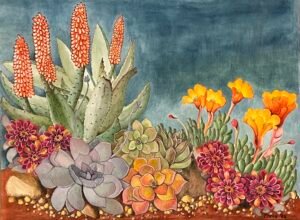
As an artist, having a website to showcase your original artworks and sell both originals and prints can be an essential tool to reach a wider audience and establish your online presence. With the ever-growing popularity of online shopping, having an artist’s website allows you to connect with art enthusiasts and potential buyers from all around the world.
Creating a Captivating Portfolio
The first step in building your artist’s website is to create a captivating portfolio that showcases your original artworks. Choose a clean and visually appealing design that complements your artwork and allows it to take center stage. Ensure that your website is easy to navigate, providing visitors with a seamless browsing experience.
Organize your portfolio into different categories or collections, making it easier for visitors to find specific pieces or styles they are interested in. Include high-quality images of your artwork, providing multiple angles and close-up shots to give viewers a detailed look at the intricacies of your work.
Selling Original Artworks
One of the main purposes of your artist’s website is to sell your original artworks. Make it easy for potential buyers to browse and purchase your artwork directly from your website. Include detailed descriptions of each piece, including its size, medium, and any other relevant information that may be of interest to buyers.
Consider offering a secure online payment system that accepts various payment methods to cater to a wider range of customers. Ensure that your website is optimized for mobile devices, as many people prefer to browse and shop from their smartphones or tablets.
Offering Prints of Your Artwork
In addition to selling original artworks, offering prints is a great way to make your art more accessible to a larger audience. Prints are often more affordable than originals, allowing art enthusiasts who may not be able to invest in an original piece to still enjoy your work.
Include a separate section on your artist’s website dedicated to prints. Display high-quality images of the prints available, along with information on the size, paper quality, and any limited editions or signed prints you may offer. Make it clear that these prints are reproductions of your original artwork, ensuring transparency with your customers.
Engaging with Your Audience
Having an artist’s website also provides you with a platform to engage with your audience and build a community around your art. Consider including a blog or news section where you can share updates about your artistic process, upcoming exhibitions, or any other relevant news.
Encourage visitors to sign up for your newsletter or follow you on social media to stay updated on your latest works and promotions. Engage with your audience through comments and feedback, fostering a sense of connection and appreciation for your art.
Promoting Your Website
Once your artist’s website is up and running, it’s important to promote it to ensure that your target audience discovers your work. Utilize social media platforms to share your artwork, drive traffic to your website, and engage with potential buyers.
Consider collaborating with other artists or influencers in your niche to expand your reach. Participate in online art communities, forums, and exhibitions to connect with fellow artists and art enthusiasts.
Remember to optimize your website for search engines by incorporating relevant keywords and metadata. This will help improve your website’s visibility in search engine results and increase the likelihood of attracting organic traffic.
Building an artist’s website to showcase your original artworks and sell prints can be an exciting and rewarding endeavor. With careful planning, attention to detail, and effective promotion, your website can become a valuable tool in establishing your presence in the art world and connecting with art lovers worldwide.